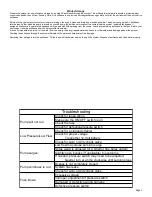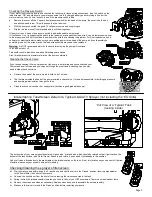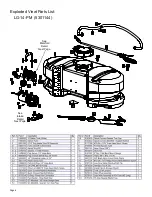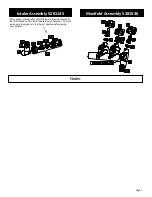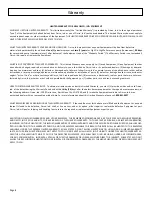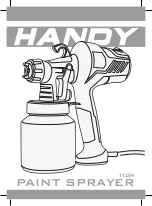
Page 3
Winter Storage
Prepare the sprayer for end-of-season storage by running RV antifreeze through the system. This will keep internal parts lubricated, protect against
corrosion and keep the unit from freezing.
Note: RV antifreeze is non-toxic and biodegradable and generally safer for the environment than automotive
antifreeze.
Before storing your sprayer for winter or long term storage, thoroughly clean and drain it as much as possible. Then pour enough pink RV antifreeze
into the tank so that when the pump is turned on you can pump the antifreeze throughout the entire plumbing system, including the bypass, if
equipped. Make sure to operate the handgun until you see pink fluid spraying from the nozzle. Leave any remaining antifreeze in the tank. Before your
next usage, rinse the antifreeze from the sprayer with clean water.
It is nearly impossible to drain all of the water from the sprayer and any trapped water can freeze in cold weather and damage parts of the sprayer.
Pumping the antifreeze through the system will displace the water and help prevent this damage.
Removing from storage: drain the antifreeze. Fill the tank with fresh water and run through the system. Dispose of antifreeze and flush water properly.
Try another 12-Volt battery
Quarter turn at a time clockwise until surging stops
Defective pressure switch
Troubleshooting
Bypass is not completely closed
System has leaks
Check for worn or dirty check valve
Excessive voltage
Improper adjustment of pressure switch
Damaged or defective wiring harness
Check for proper voltage
Check for worn or dirty check valve
Low flow may cause pump to surge
Spray wand is adjusted for a small or fine spray pattern
Slightly open bypass (if applicable) to overcome
If needed, pressure switch may need to be adjusted
Pump will not run:
Low Pressure/Low Flow:
Pump surges:
Pump continues to run:
Fuse blows:
Check for loose wiring
Make sure the ON/OFF switch is on
Check the fuse
Check for defective pressure switch
Check for a clogged strainer



